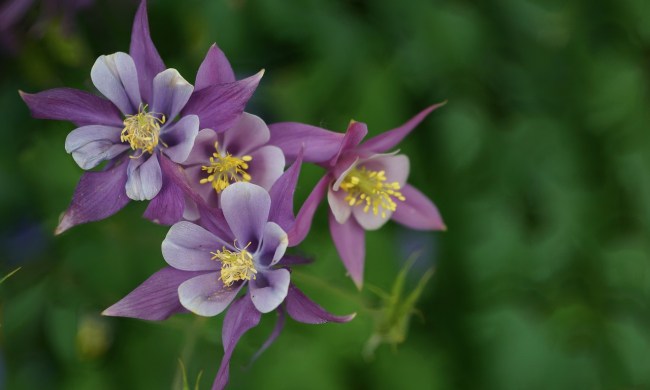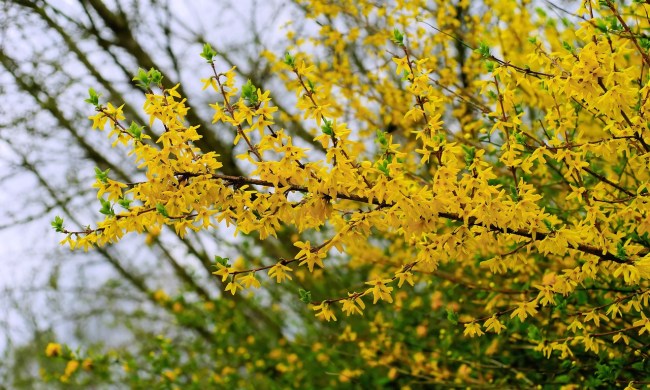There are many herbs to grow in your kitchen herb garden, but lavender is one of the most versatile of them. It can be used for flavoring tea, added to potpourri, or dried for use in sweet-smelling arrangements. Lavender is easy to care for and easy to propagate, so it isn’t unusual to end up with a surplus of flowers. If you aren’t sure what to do with all the extra lavender stems, we’re here to help. Here are five of our favorite creative ways to use your lavender.
Candles
Lavender scented candles are fairly easy to find in stores, but they’re easy to make at home, too. All you need is candle wax and wicks, which can be found in craft stores or online, a heat-safe container, and your lavender. You can also add lavender essential oil, to make the scent stronger.
Follow any directions on the packaging of your wax carefully. Place the wick into your container, so that one end touches the bottom and the other extends above where you want the top of your candle to be. To keep your wick in place, you can lay a pencil or dowel rod across the top of the jar and wrap or tie the wick around it.
Gently stir in your thoroughly washed lavender and lavender essential oil to the wax and carefully pour it into your container. If the container is glass, you can also arrange sprigs of lavender around the edges to create a cute design or add a layer of lavender buds to the top of the candle.
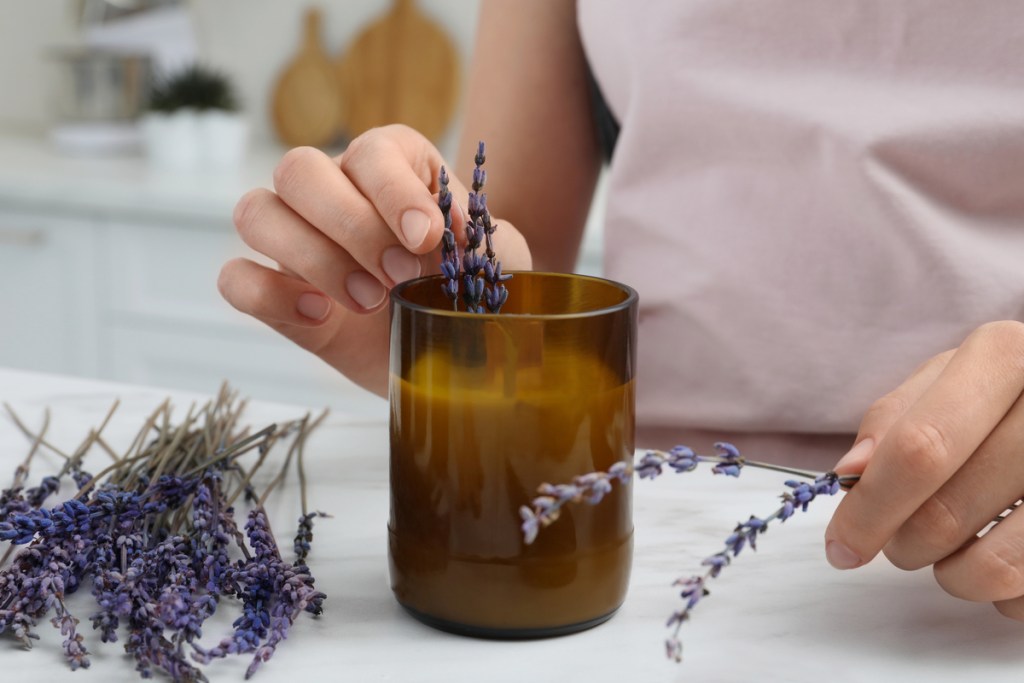
Candied lavender decorations
Candied or crystallized lavender stems make wonderful edible garnishes and decorations. You can add them to drinks, use them to top cupcakes or cheesecake, or just lay them on a plate next to your favorite cookie for a beautiful and delicious treat. You could even add them to a pudding “dirt” cup to make a cute flower pot dessert.
To begin, wash and dry your lavender stems and remove the leaves. You can use either an egg white wash or lavender syrup to coat them. For the egg white wash, whisk together the white of one large egg with a quarter teaspoon of water until it begins to look foamy. The lavender syrup can be made by boiling one cup of water, one to two cups of sugar, and one to three tablespoons of lavender. Once the sugar is dissolved, remove it from the heat and let it sit for half an hour to 45 minutes. Strain out the lavender and your syrup is complete.
Coat the stems completely, and dust them with sugar. Fine ground, but not powdered, sugar yields the best texture, but feel free to use your favorite sweetener. Let them dry completely and you’re ready to go!
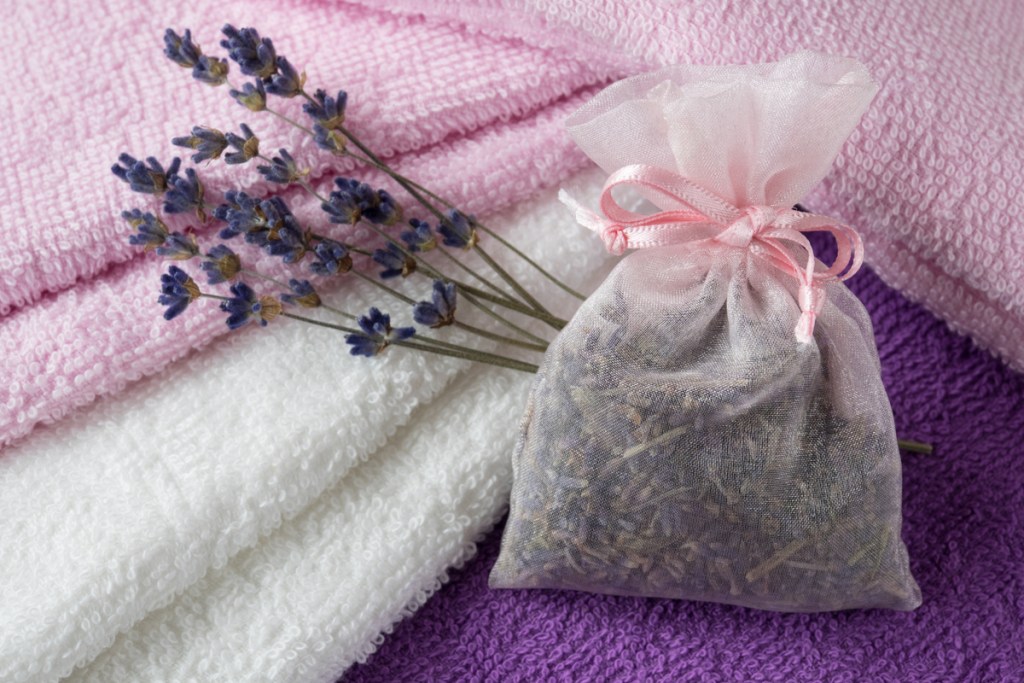
Dryer bags
Lavender dryer bags are easy to make at home and can be beneficial for your clothes. Their scent is pleasant to us, but repels moths, keeping your clothes safe and fresh smelling. Dried lavender flowers work best, but you can use whole stems if you prefer.
Simply add a few spoonfuls of the lavender to a small bag that is porous but doesn’t have holes big enough for the lavender to fall through. Most fabrics will work for this. Tie or sew the bag closed, and it’s ready to use. You can store them in your dresser drawers or hang them in your closet to imbue your clothes with an even stronger lavender scent.
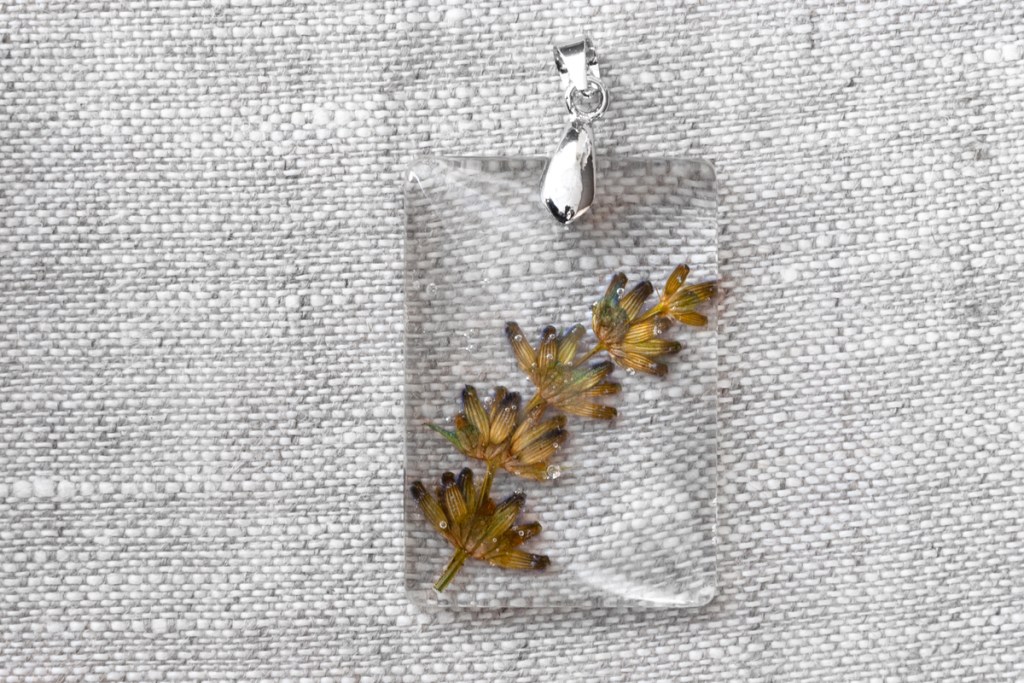
Resin accessories
Fresh or dried lavender suspended in clear resin is a beautiful sight, and, thanks to the wide variety of resin molds available, you can make almost any accessory easily at home. All you need is crafting resin, a silicon mold the size and shape you want, any extra bits (a chain for a necklace, or hooks to make earrings, for example), and your lavender. You can make all sorts of jewelry, knick-knacks, dice, or even a comb. Add additional flowers, some glitter, or a streak of acrylic paint for some creative flare.
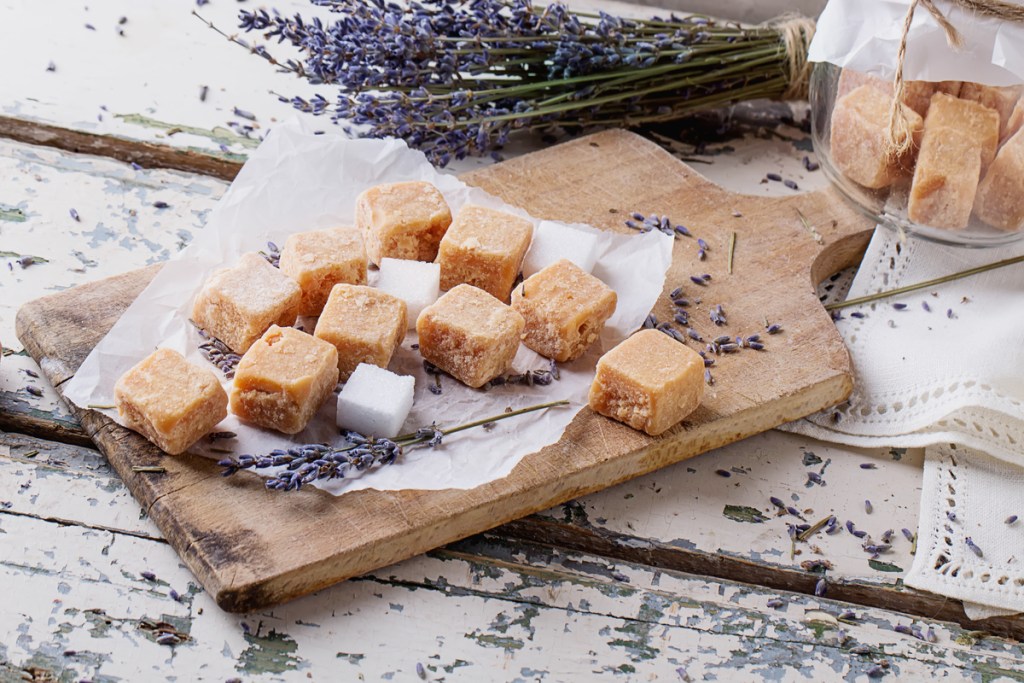
Lavender caramel
For a sweet and tasty sauce to drizzle over ice cream or cheesecake, why not try your hand at making some lavender caramel? All you need is cream, vanilla extract, and lavender flowers. Mix and heat them, then leave it to steep off the heat, so the cream absorbs the lavender flavor. Strain the lavender flowers out, and then mix the lavender cream into hot caramel sauce. Pour it into your favorite heat-safe storage or serving container and you’re ready to go!
Be careful not to burn yourself, freshly made caramel is very hot. You can even pour it into a pan lined with wax paper, cool it in the refrigerator for a few hours, and have lavender caramel candy that can be cut into pieces, wrapped in wax paper, and set out in your favorite candy bowl.
These are a few of our favorite ways to use lavender, but there are tons of other things you can do with your extra stems, too. Why not get creative and experiment a little with your flowers? Who knows what new trend you could end up discovering! No matter what you choose to do, you can’t go wrong with these five excellent ideas.

